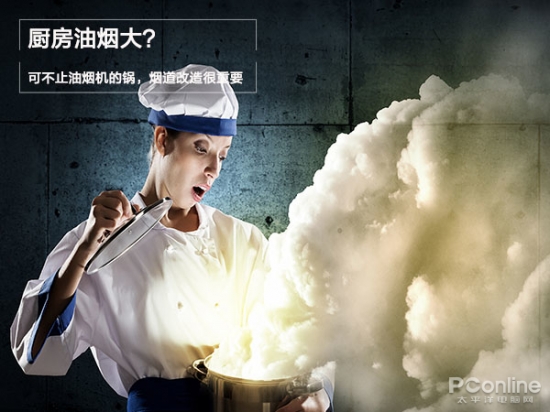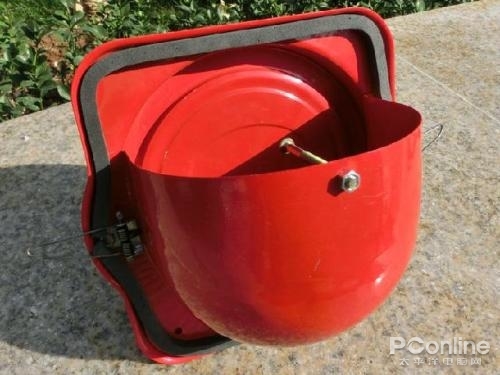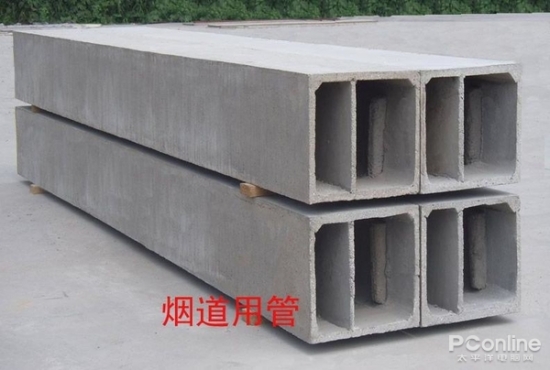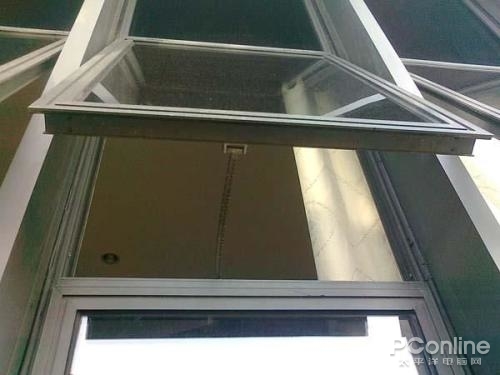The kitchen filled with smoke, and every time the mother cooked, she was often surrounded by fumes, coughing and looking uncomfortable. When it comes to reducing cooking fumes, many people immediately think of buying a high-quality range hood. But have you ever considered how the flue system can also play a crucial role in ensuring effective ventilation? While there are plenty of guides online on how to choose a good range hood, today we're focusing on something just as important: the design and installation of the exhaust pipe.

**Common reasons why kitchen fumes fill the room:**
1. **Improper hood height:** The ideal distance between the range hood and the cooktop is usually between 650mm and 750mm. If it's too high, the hood won't capture all the smoke effectively.
2. **Cooking methods affect fume levels:** High-heat cooking like stir-frying or deep-frying creates more smoke, which can escape the hood’s reach, especially during sizzling moments.
3. **Air turbulence from windows and doors:** Opening windows or using fans while cooking can disrupt the airflow and cause smoke to spread instead of being extracted.
4. **Poorly designed or clogged exhaust pipes:** If the flue isn’t smooth or the check valve is faulty, fumes can get trapped and return into the kitchen.
**Why proper flue installation matters:**
During kitchen renovation, the flue system is often overlooked, but it plays a vital role in preventing backdrafts and ensuring proper ventilation. A poorly installed flue can lead to unpleasant odors and even health issues over time. Here are some key points to consider when modifying your flue:
**Question 1 – Replacing the check valve**

If the original flue has been removed or if you want better smoke control, installing a check valve is a good idea. While it may not seem essential, it helps prevent smoke from flowing back into the kitchen. However, it’s important to clean the valve regularly—otherwise, it may not function properly. It’s recommended to replace it every two years for optimal performance.
**Question 2 – Keep the secondary flue intact**

Each kitchen typically has a main and a secondary flue. The secondary flue acts as a buffer, helping to isolate each household’s smoke before it enters the main flue. If the secondary flue is removed or improperly connected, it can lead to cross-smoke or backdrafts, especially in multi-story buildings.
**Question 3 – Be cautious with window exhaust**

Some homeowners opt to vent through the window instead of the flue, but this requires careful planning. Before making any changes, ensure you get permission from the property management. Also, be mindful of safety—metal exhaust pipes can become hot and potentially break glass if not properly sealed. Extending the pipe beyond the window and adding a wind cap can help prevent rain and wind from causing issues.
**Question 4 – Pay attention to construction details**
When installing the range hood, shorter exhaust pipes are always better. Some people extend the pipe for aesthetic reasons, but this can trap smoke inside the duct and let it re-enter the kitchen after turning off the hood. Avoid altering the original flue structure; always connect to the secondary flue to maintain proper airflow.
**Editor’s summary:**
Reducing kitchen fumes isn’t just about choosing the right range hood—it also involves proper flue design, smart cooking habits, and thoughtful window placement. To achieve a smoke-free kitchen, it takes a combination of good equipment, smart installation, and regular maintenance. PConline is here to guide you every step of the way, helping you create a cleaner, healthier cooking space.
The 18650 batteries are lithium-ion rechargeable batteries. The scientific name for them is 18650 cells. They have a 3.7V voltage and have capacities between 1800 mAh and 3500 mAh. The average charge time for the 18650 battery is approximately four hours.
18650 Battery,3.7V 2500Mah 2600Mah Battery,High Capacity Li Ion 18650 Battery,Lifepo4 18650 Battery
Jiangsu Zhitai New Energy Technology Co.,Ltd , https://www.zttall.com